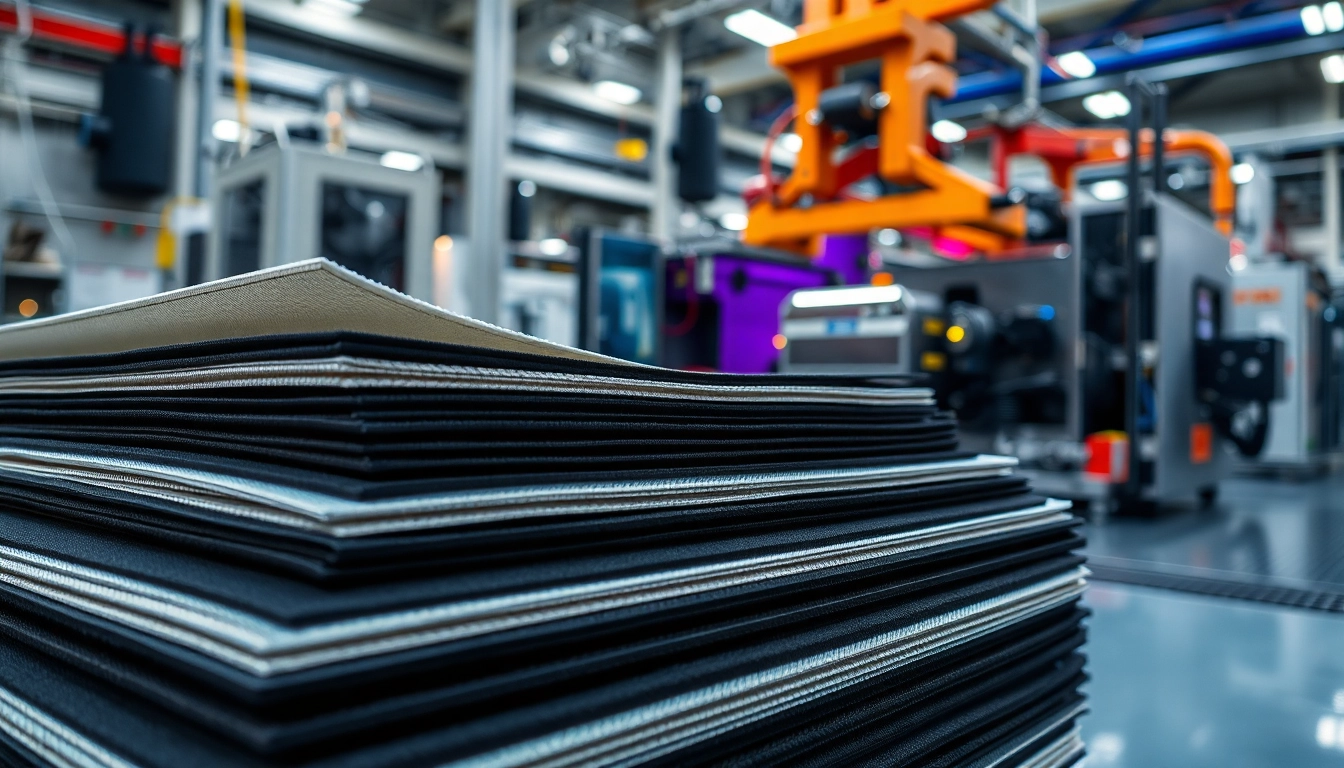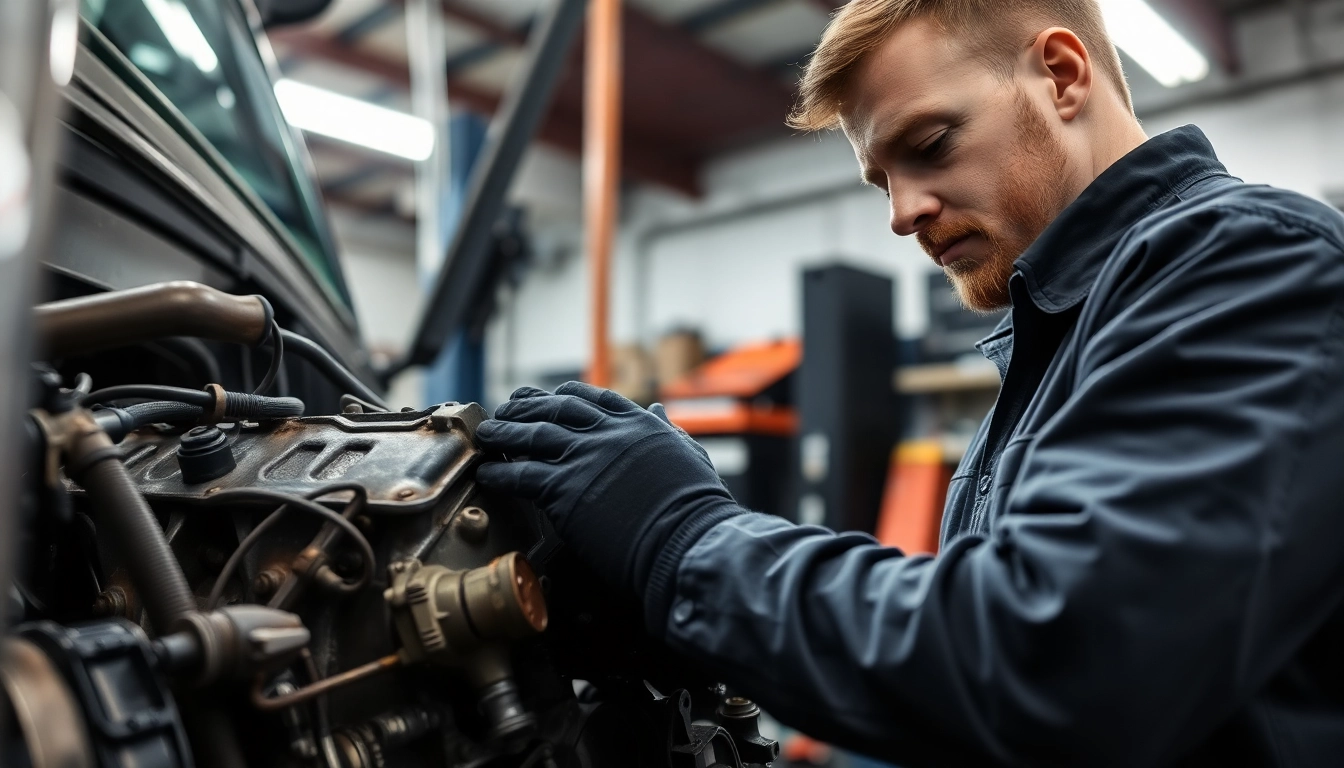Introduction to Epoxy Prepregs
In the realm of advanced manufacturing, epoxy prepregs have emerged as a pivotal material, driving innovations across various industries. These pre-impregnated composite materials, composed of reinforcing fibers and thermoset epoxy resins, are facilitating remarkable advancements in the production of high-performance components. From aerospace to automotive applications, the utilization of epoxy prepregs has redefined efficiency, strength, and durability, making them one of the most sought-after materials in modern manufacturing. This article aims to provide a comprehensive understanding of what epoxy prepregs are, their composition, applications, benefits, manufacturing techniques, and future trends.
What Are Epoxy Prepregs?
Epoxy prepregs, shorthand for pre-impregnated materials, are composite materials that consist of reinforcing fibers, such as carbon or glass, that have been pre-impregnated with a thermoset epoxy resin. This unique combination allows for enhanced performance characteristics such as exceptional strength-to-weight ratios, corrosion resistance, and thermal stability. The prepreg form simplifies the manufacturing process, as these materials are ready to be molded and cured, eliminating the need for messy resin mixing during application.
Composition and Structure of Epoxy Prepregs
The structural integrity of epoxy prepregs is derived from their composition. Typically, they are made from high modulus fibers such as carbon, aramid, or glass fibers located in a matrix of epoxy resin. The resin is partially cured before it is applied to the fibers, allowing for optimal handling and application characteristics. This construction results in a lightweight, high-strength material that benefits industries requiring precision engineering and durability. The exact ratios of resin to fiber and the type of resin used are critical factors that influence the final properties of the cured composite.
The Importance of Prepreg Technology in Composites
Prepreg technology has revolutionized the manufacturing of composite materials, enabling improved consistency and quality control compared to traditional wet-layup processes. The controlled environment for impregnation ensures a more uniform distribution of the resin, which culminates in enhanced mechanical properties and reduces defects commonly associated with hand lay-up techniques. This level of precision is particularly vital in industries like aerospace and automotive, where performance and safety are paramount.
Applications of Epoxy Prepregs
Use in Aerospace and Automotive Industries
The aerospace and automotive sectors are at the forefront of utilizing epoxy prepregs due to their superior strength-to-weight ratio. In aerospace, components such as wing structures, fuselage sections, and engine components benefit from the high performance of epoxy prepregs, which contribute to fuel efficiency and operational safety. Similar applications in automotive manufacturing enhance performance, reduce weight, and improve fuel efficiency, making vehicles lighter without compromising safety or durability.
Role in Sports and Recreational Equipment Manufacturing
Epoxy prepregs are also widely used in the production of high-performance sports and recreational equipment, including bicycles, skis, and surfboards. The advantage of using these materials lies in their ability to create strong yet lightweight structures that can withstand substantial stress and environmental factors. For example, the incorporation of carbon fiber epoxy prepregs in bicycle frames results in a substantial weight reduction while simultaneously enhancing the rigidity and responsiveness of the ride.
Industrial Applications and Benefits
Beyond aerospace and sports, epoxy prepregs find diverse industrial applications, including manufacturing equipment components, tooling, and even construction materials. Their ability to be molded into complex shapes while providing high strength and stability makes them ideal for tools that need to withstand high temperatures and pressures. Various industries benefit from the cost-effectiveness and efficiency of using epoxy prepregs, as they require fewer raw materials and labor during manufacturing processes.
Benefits of Using Epoxy Prepregs
Enhanced Performance Characteristics
One of the most compelling reasons to utilize epoxy prepregs is their outstanding performance characteristics. The combination of a robust resin system with high-strength fibers results in materials that can endure harsh environments, resist fatigue, and maintain dimensional stability. This makes epoxy prepregs a go-to choice for applications necessitating high performance and durability, like in aerospace structures and automotive components.
Cost-Effectiveness and Efficiency
Utilizing epoxy prepregs can lead to considerable cost savings in production. The preparation and handling of these materials streamline manufacturing processes, reducing labor costs and material waste. Standardizing the resin content in prepregs also aids in lowering production variability, ensuring that the quality remains consistent batch after batch. This efficiency extends the life cycle of products and aligns with modern industry trends toward sustainability.
Environmental Considerations and Sustainability
The adoption of epoxy prepregs aligns well with global sustainability efforts. These materials can be engineered to meet stricter environmental standards, often featuring reduced volatile compound emissions during production. Innovations in epoxy resin formulations further enhance their compatibility with recycling processes, which is essential as the demand for sustainable manufacturing practices continues to rise. Additionally, the enhanced durability of composite materials contributes to a longer lifecycle, minimizing waste.
Manufacturing Techniques for Epoxy Prepregs
Different Curing Processes Explained
The curing process of epoxy prepregs is instrumental in determining the final material properties. Common curing techniques include oven curing, autoclave curing, and even room temperature curing. Each method varies in terms of temperature, pressure, and time, impacting the final characteristics of the composite.
- Oven Curing: Involves heating prepregs in an oven to accelerate the curing process, often leading to high-quality results.
- Autoclave Curing: Utilizes controlled pressure and temperature for optimal curing, producing composites with superior mechanical properties.
- Room Temperature Curing: Allows for the curing of prepregs at ambient conditions, providing flexibility in manufacturing but may lead to longer processing times.
Quality Control in Prepreg Production
Quality assurance is critical in the production of epoxy prepregs. Comprehensive testing protocols and quality control measures are essential to ensure that the final product meets the required specifications. This may include:
- Visual inspections to detect defects in the woven fabric.
- Mechanical testing for tensile strength, flexural strength, and impact resistance.
- Thermal testing to evaluate performance under varying temperature conditions.
- Dimensional checks to ensure that the prepregs conform to industry standards.
Implementing rigorous quality control measures guarantees that the resulting composites perform reliably in their intended applications.
Innovations in Prepreg Manufacturing
Ongoing research and development in the field of prepreg manufacturing are yielding innovative solutions that enhance performance and reduce manufacturing costs. Developments in resin chemistry are leading to lighter and more durable materials, while advancements in automated production technologies are further optimizing the curing processes. Smart manufacturing techniques, utilizing IoT devices and data analytics, are enabling manufacturers to gain insights into performance metrics, thus streamlining production and improving overall product quality.
Future Trends in Epoxy Prepregs
Emerging Technologies and Materials
The future of epoxy prepregs is bright, characterized by the integration of emerging technologies that are set to revolutionize their application. Advances in nanotechnology and bio-based resins are being explored, promising new materials that are even lighter and more sustainable. As the adoption of 3D printing technology expands, the ability to create complex structures from prepregs will open new design possibilities and applications.
Market Growth and Demand Projections
The global market for epoxy prepregs is expected to witness significant growth in the coming years, driven by increasing demand from various sectors such as aerospace, automotive, and renewable energy. As industries seek more efficient and sustainable solutions, the adoption of high-performance composite materials will continue to rise. With the growing focus on reducing weight and improving fuel efficiency in vehicles, and the escalating need for lightweight structures in aerospace applications, the demand for epoxy prepregs is projected to expand rapidly.
Final Thoughts on the Future of Epoxy Prepregs
The trajectory of epoxy prepregs is set to evolve as technology advances and industries adapt. With their myriad of applications and outstanding performance characteristics, these materials are positioned to remain at the forefront of composite innovation. Continued investment in research, sustainability, and manufacturing efficiencies will ensure that epoxy prepregs not only meet the standards of modern manufacturing but also pave the way for future developments in high-performance materials.



